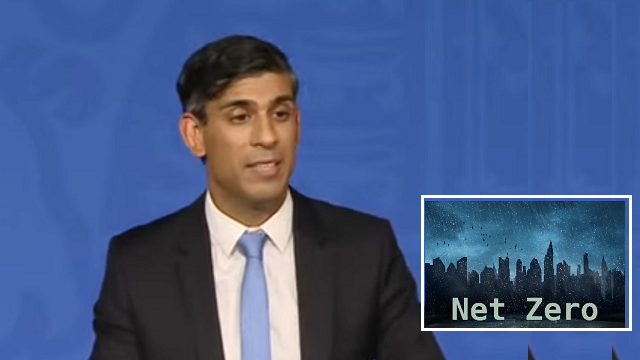
Investigations into the Biden family are gaining steam. On September 12, House Speaker Kevin McCarthy opened an impeachment inquiry into President Joe Biden. House Republicans, McCarthy said, have uncovered “serious and credible allegations” that “paint a picture of a culture of corruption.” On another front, on September 14, David Weiss, the conflicted special counsel in the Hunter Biden probe, indicted the presidential son on three gun-related charges.
Judicial Watch President Tom Fitton called the impeachment inquiry “a necessary step for accountability and justice.” JW’s own investigations into the Bidens will continue. We’ve been at it for years. In 2020, JW Freedom of Information actions revealed new details about Ukraine corruption. We have repeatedly sued the State Department, Justice Department, FBI, CIA, and National Archives for information related to the Bidens. Read more about JW’s investigations here.
House Oversight Committee Chairman James Comer—who will lead the impeachment inquiry along with Judiciary Committee Chairman Jim Jordan and Ways & Means Committee Chairman Jason Smith—has been banging away since January with an investigation of the Biden family’s foreign business practices and international influence peddling schemes, most notably the activities of Hunter Biden. Up to now, there’s little indication that Comer has gained direct access to the financial records of Hunter and Joe Biden. Opening an impeachment inquiry supercharges congressional powers and opens the way to a deeper probe into Biden finances.
But even without direct access to Biden family finances, the Comer Committee produced a remarkable array of witnesses, testimony and documents. The outpouring of facts, documents and witness testimony can be overwhelming to sort out, but Comer went a long way to clarifying the complex story with the release of a Biden family “Influence Peddling Timeline.” It’s an important document, painting an all-too-human picture of scoundrels, sleaze, and corruption.
According to the committee, Hunter Biden and a web of associated business entities and family members raked in over $20 million from 2014 to 2017—not coincidentally the last years of the Obama administration, when then-Vice President Joe Biden wielded considerable influence. The Hunter Biden hustle has all the hallmarks of a classic Washington influence-peddling operation: shady characters, murky deals, money moving between shell companies.
The gravy train started rolling in the spring of 2014, with money first flowing in from Kazakhstan, Russia, and Ukraine: $142,000 from a well-connected Kazakh millionaire; $3.5 million from a Russian oligarch; $6.5 million from Ukraine. In 2015, a Romanian tycoon began payments eventually totaling $3 million. In 2017, $8 million materialized from China.
The Kazakh Connection: A Sports Car for Hunter
The first sign that something was not kosher in Biden World comes in April 2014, when a controversial Kazakh oligarch, Kenes Rakishev, transfers $142,300 to a key Biden-connected financial entity, Rosemont. The next day, Rosemont transfers exactly $142,300 to a New Jersey auto dealership for Hunter Biden’s purchase of a Fisker electric car, which he quickly trades up for a Porsche.
Rakishev was a close associate of Kazakhstan Prime Minister Karim Massimov. Around the time of Hunter Biden’s sports car windfall, someone had arranged for Rakishev and Massimov to be to be photographed at Washington’s Café Milano with Hunter Biden and a very special guest: then-Vice President Joe Biden.
Such a photograph is precious coin of the realm in corrupt countries—an advertisement of power and connections. Corruption in Kazakhstan is a serious concern, according to international watchdogs. Of course this was a fact well known to both Bidens, but it did not prevent them from joining Rakishev and Massimov for dinner at the Café Milano—twice.
According to a Comer Committee interview of Biden business partner Devon Archer, Hunter Biden and Joe Biden joined the Kazakhs for dinner in April 2014 and again in April 2015. It’s unclear if the famous photograph is from the first or second dinner. In May of 2014, Hunter Biden traveled to Kazakhstan to try to drum up business between the Ukrainian energy company Burisma, Kazakhstan’s KazMunay Gas (where Rakishev served as a director), and a Chinese energy company.
Enter the Russian: A $3.5 Million Payday
The money trail in the Biden inquiry runs through a private investment firm that began life as Rosemont Seneca Partners and morphed over time into a web of limited liability companies. LLCs offer participants—legitimate companies and crooks alike—maximum secrecy. Rosemont Seneca Partners was founded in 2009 by Biden and two connections from Yale University: Devon Archer and Chris Heinz. Heinz is the stepson of former Secretary of State John Kerry and heir to the Heinz food company fortune. He departed the partnership in 2014.
The Comer Committee offers in its “Second Bank Records Memorandum” a mind-blowing list of twenty-one financial entities associated with the Biden enterprise. Most of them are LLCs and many have the name “Rosemont” or “Seneca” in them. We’ll refer to them simply as “Rosemont entity,” but the diligent reader can find details of the myriad Biden-connected LLCs in the three committee bank records memoranda linked at the end of this report.
Another guest at the Café Milano dinner in Washington in April 2014, according to the Comer Committee timeline: Russian oligarch Yelena Baturina. Two months earlier, Baturina had wired $3.5 million to a Rosemont entity. The Rosemont entity transferred $2.7 million to a bank account in a second Rosemont LLC jointly owned by Biden and Archer. Separately, $750,000 was sent from a Rosemont entity directly to Archer.
The Ukraine Connection: A $10 Million Bribe?
2014 was a very good year for Hunter Biden’s finances. In May, Biden and partner Devon Archer joined the board of Ukrainian oligarch Mykola Zlochevsky’s embattled energy company, Burisma. Each would be paid $1 million per year.
The committee’s third bank memorandum notes that “then-Vice President Joe Biden visited Ukraine” on an anti-corruption drive aimed at Zlochevsky allies “soon after first payments” were sent to Archer and Hunter Biden. The payments were wired to a Rosemont entity and then “transmitted in incremental amounts to Hunter Biden’s different bank accounts.”
By the end of the year, Hunter Biden had met with a high-level Obama administration official about Burisma. Zlochevsky complained about “government pressure” and urged Biden to contact his father, the vice president. In the interview released by the committee, Archer notes that Hunter Biden “called DC” after being pressured by Zlochevsky and his associates.
Earlier this year, Senator Chuck Grassley released a bombshell FBI informant report of a 2016 meeting with Zlochevsky. In the report, Zlochevsky claimed he had been coerced into paying a $10 million bribe to Hunter and Joe Biden. It “cost 5 [million] to pay one Biden, and 5 [million] to another Biden,” the FBI informant reported Zlochevsky saying.
Zlochevsky told the informant the payments were well hidden. It “would take them ten years to find the records,” he said.
In total, notes the committee, a total of $6.5 million went to “the Biden family and their associates” from the Ukraine connection.
The Romanian Payout: The Robinson Walker Shell
By November 2015, Hunter Biden had struck up a lucrative relationship with a controversial Romanian real-estate tycoon, Gabriel Popoviciu. Meanwhile, over at the White House, Vice President Biden was taking point on an anti-corruption campaign aimed at Romania. In September, Vice President Biden had welcomed the Romanian president to the White House, declaring his support for the country’s “anti-corruption efforts.”
Popoviciu was fighting bribery and corruption charges connected to a high-profile land deal near Bucharest. Hunter Biden joined the Popoviciu defense team. From 2015 to 2017, according to the Comer timeline, Biden met twice with the U.S ambassador to Romania and traveled at least once to the country. Meanwhile, more than $3 million from Popoviciu flowed to Robinson Walker LLC, an account controlled by a close Biden family associate, John Robinson “Rob” Walker.
According to the committee’s second bank memoranda, the Robinson Walker LLC is at the center of many payments to the Biden family and associates. Robinson Walker “received $3 million from Romanian Gabriel Popoviciu’s Cypriot company and then made payments to the Biden family,” the memo notes. Among the recipients was Hallie Biden, the widow of Hunter’s brother, Beau.
The committee noted that “while Vice President Biden advocated publicly for anti-corruption policies in Romania, bank records show Biden family members and business associates were simultaneously reaping in significant amounts of money” from Popoviciu.
China: “10 held for the big guy?”
By January 2017, the Obama administration was coming to an end and Hunter Biden and his associates were angling for their biggest score of all: China.
The target, cultivated for years, was the giant conglomerate CEFC China Energy. The Biden business plan was to sell U.S. energy products to CEFC and expand into other deals. CEFC was interested in a relationship.
The total amount paid to “the Biden family and their associates” by China, notes the Comer Committee, is “over $8 million.” Payments by CEFC were sent to the Robinson Walker shell—the same LLC used for the Romanian payouts—and distributed to various Biden family members and associates.
In March 2017—two months after Joe Biden left the vice presidency—a $3 million CEFC payment arrived at the Walker shell. Rob Walker distributed “over $1 million of that money to Biden family members,” notes the second bank memoranda, including payments to Hunter Biden; Hallie Biden; Joe Biden’s brother, business consultant and dealmaker James Biden; and a still-mysterious account simply labeled “Biden.”
Another beneficiary was Hunter Biden’s business partner James Gilliar. The Walker shell wired him $1 million. The British energy consultant was a key figure in putting the Biden network together with CEFC—including, seemingly, Joe Biden.
In a May 2017 email to Hunter Biden and associates about profit-sharing from the CEFC deal, Gilliar asks, “10 held by H for the big guy?”
An IRS agent who worked on the Hunter Biden case was pressed about the Gilliar email in July testimony before Congress. Joseph Ziegler told the House Oversight Committee that “all I can do is speak to the evidence there” and “that email, ‘ten held by H for the big guy’ and from what I understand that to be is his dad, President Biden.”
In August 2017, in the biggest payday of all, CEFC wired $5 million to a new LLC formed by Hunter Biden and Gongwen Dong—a top aide to CEFC Chairman Ye Jianming. The new company would pursue energy and infrastructure deals. Hunter would receive a $500,000 retainer and a $100,000 monthly payment. James Biden would be paid $65,000 per month. Hunter Biden also received an additional $1 million retainer to represent Patrick Ho, a high-ranking CEFC official in the United States.
A month after the $5 million CEFC wire, Hunter Biden was busy in Washington setting up a new office for himself and his CEFC partners. “Please have keys made available for new office mates,” he emailed building management. “Joe Biden, Jill Biden, Jim Biden, Gongwen Dong (Chairman Ye CEFC emissary).” Hunter Biden added: “I would like the office sign to reflect the following: Biden Foundation, Hudson West (CEFC US).”
It looked like happy days were here again for the Bidens and their new Chinese friends. But in fact, the end was near.
The Fall of the House of Hunter
In November 2017, Patrick Ho—the high-ranking CEFC agent—was arrested in New York on suspicion of bribery and money laundering. Four months after Ho’s arrest, CEFC Chairman Ye Jianming vanished. According to news reports, he was suspected of widespread economic crimes at the helm of CEFC and arrested on the orders of Communist Party boss Xi Jinping. Ye has not been heard from since. CEFC collapsed into bankruptcy. Ho was convicted of bribery and money laundering in 2019 in connection with African oil deals and sentenced to three years in prison.
With Ho’s arrest, Biden business came to a screeching halt. Hunter Biden, by his own account, spiraled deep into a crack cocaine addiction. Many of his associates also did not fare well. Former client Gabriel Popoviciu, the Romanian real-estate tycoon, fought a six-year, ultimately successful battle to prevent his extradition from London to Bucharest to face bribery and corruption charges. Ukrainian oligarch Mykola Zlochevsky has been fending off corruption charges since 2012, accused of large-scale theft of government funds. He is believed to be living in Monaco. Karim Massimov, the former Kazakhstan prime minister who dined with Hunter and Joe Biden in 2014 and 2015, was sentenced to eighteen years in prison for attempting a coup. Business partner Devon Archer was found guilty of fraud in 2018 in a conspiracy to cheat a Native American tribe in a bond scheme; he is appealing the conviction.
Doubtless there will be more to come about Hunter Biden as the impeachment inquiry digs deeper into bank records and the money trail. You lie down with dogs, you get up with fleas. But what about Joe Biden? Some questions are obvious.
Who is connected to that mysterious account named “Biden?”
Is Joe Biden “the big guy” and was “10”—or anything—held for him? Where is it?
Did a Ukrainian oligarch funnel $10 million in bribes to the Bidens? Where are the records?
Other questions may lead the committee deep into a wilderness of mirrors.
For example, is there a relationship between Vice President Biden’s anti-corruption statements and payments to Hunter Biden-connected accounts?
Are there other, unidentified accounts?
What is the financial relationship between James Biden to his brother Joe?
Did foreign intelligence services—no doubt tipped off to Hunter Biden’s activities—play any role in the Biden affair?
Interesting times ahead.
AUTHOR
MICAH MORRISON
Micah Morrison is chief investigative reporter for Judicial Watch. Tips: mmorrison@judicialwatch.org
SOURCES:
Read the first House Oversight Bank Memorandum (China) here.
Read the second House Oversight Bank Memorandum (China, Romania) here.
Read the third House Oversight Bank Memorandum (Russia, Ukraine, Kazakhstan) here.
RELATED ARTICLES:
The New Moral Order Is Already Crumbling
Hunter Biden’s Chinese Business Associates Put Joe Biden’s Address On Two Payments, House Oversight Finds
‘On Behalf Of The Family’: Hunter Biden’s Uncle Thanked Lawyer Who Allegedly Paid $2 Million Of Hunter’s Taxes
RELATED TWEET:
Investigative Bulletin is published by Judicial Watch. Reprints and media inquiries: jfarrell@judicialwatch.org
EDITORS NOTE: This Judicial Watch column is republished with permission. All rights reserved.















